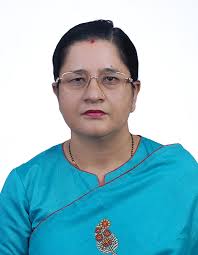"Energy Development Roadmap-2081" approved
It is zeroed in on generating 28,500 megawatts of electricity by 2035.

KATHMANDU, JANUARY 2: The cabinet meeting has approved the proposal of "Energy Development Roadmap-2081," paving the way for the generation of 28,500 megawatts of electricity by 2035.
The meeting held on Tuesday (Dec. 31, 2024) did so. With this approval, various investment models are now open for large-scale and new projects.
Energy, Water Resources and Irrigation Minister Deepak Khadka informed that the roadmap includes provisions for opening up all models for hydropower projects to achieve the target of generating 28,000 megawatts of electricity by 2035.
"We presented a proposal to the cabinet to make it easier for investors and to open up the way for both domestic and foreign investors. With the approval of this proposal, the government's goal of achieving 'Prosperous Nepal' through the hydropower sector will be realized," said Energy Minister Khadka.
The roadmap has paved the way for the development of projects initiated by the government as well as those with domestic and foreign investment, and for hydropower projects of all types. Minister Khadka stated that the path is now clear to proceed with projects in any model that benefits the state.
Minister Khadka said that the government is aiming to move forward with projects simultaneously, ensuring maximum public participation and benefits for the state. The roadmap has set a target of investing 46.5 billion US dollars (approximately 62.31 billion Nepali rupees) for the overall development of the country's energy sector over the next 10 years.
With the approval of the roadmap after lengthy discussions and debates, projects that were halted have now been cleared to proceed. The roadmap includes detailed information on the investment required for hydropower projects, transmission, distribution, and substations.
The ministry has stated that the roadmap also includes a plan to export 10,000 megawatts of electricity to neighboring India within the next 10 years, and another 5,000 megawatts to other neighboring countries like Bangladesh by 2035.
While the target is to reach a total installed capacity of 28,500 megawatts by 2035, currently, only around 3,400 megawatts of electricity is being generated. Minister Khadka stated that the government has adopted a policy to prioritize reservoir-type projects in the future and encourage the private sector to invest accordingly.
Investments in the energy sector will involve participation from the government, private sector, and the general public. Similarly, the plan includes giving equal importance to the capital of non-resident Nepalis and Nepalis working abroad, in addition to the private sector, general public, and foreign investment.

Nepal begins preparations to exit FATF grey list

MG Motors Nepal launches MGS5 EV in Butwal and Bhairahawa

Health insurance covers 49 per cent population in Gandaki

Dr. Neelam Dhungana Timsina appointed acting governor of NRB

Electric SUV boom in Nepal

International Transport Conference on April 11-13

Government’s health insurance liabilities soar to Rs 16.45 billion



Feedback